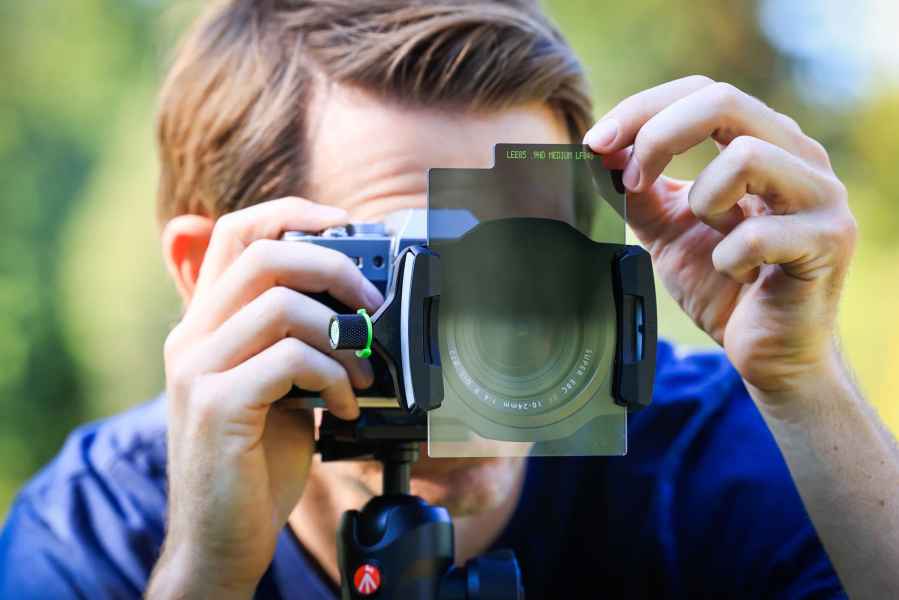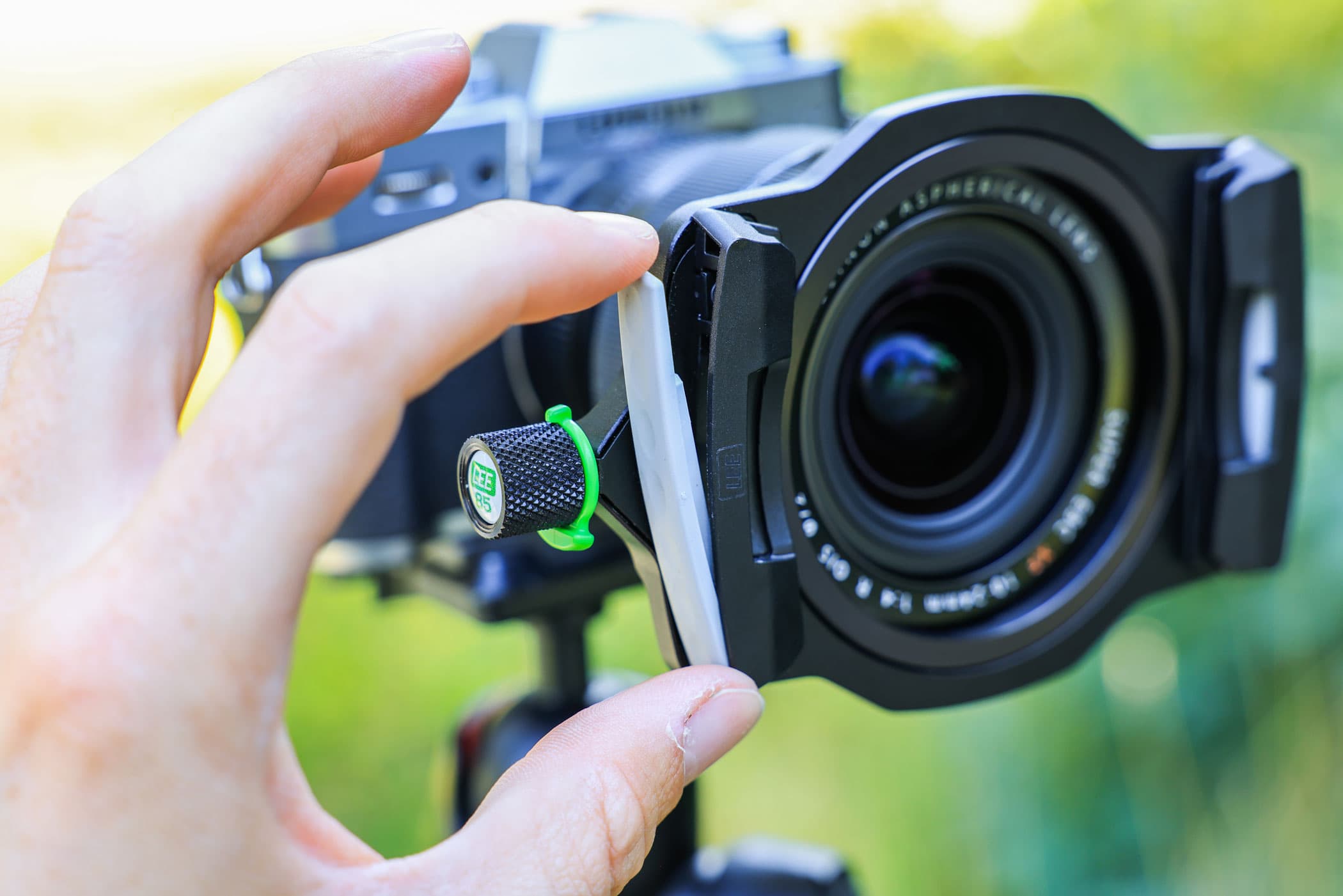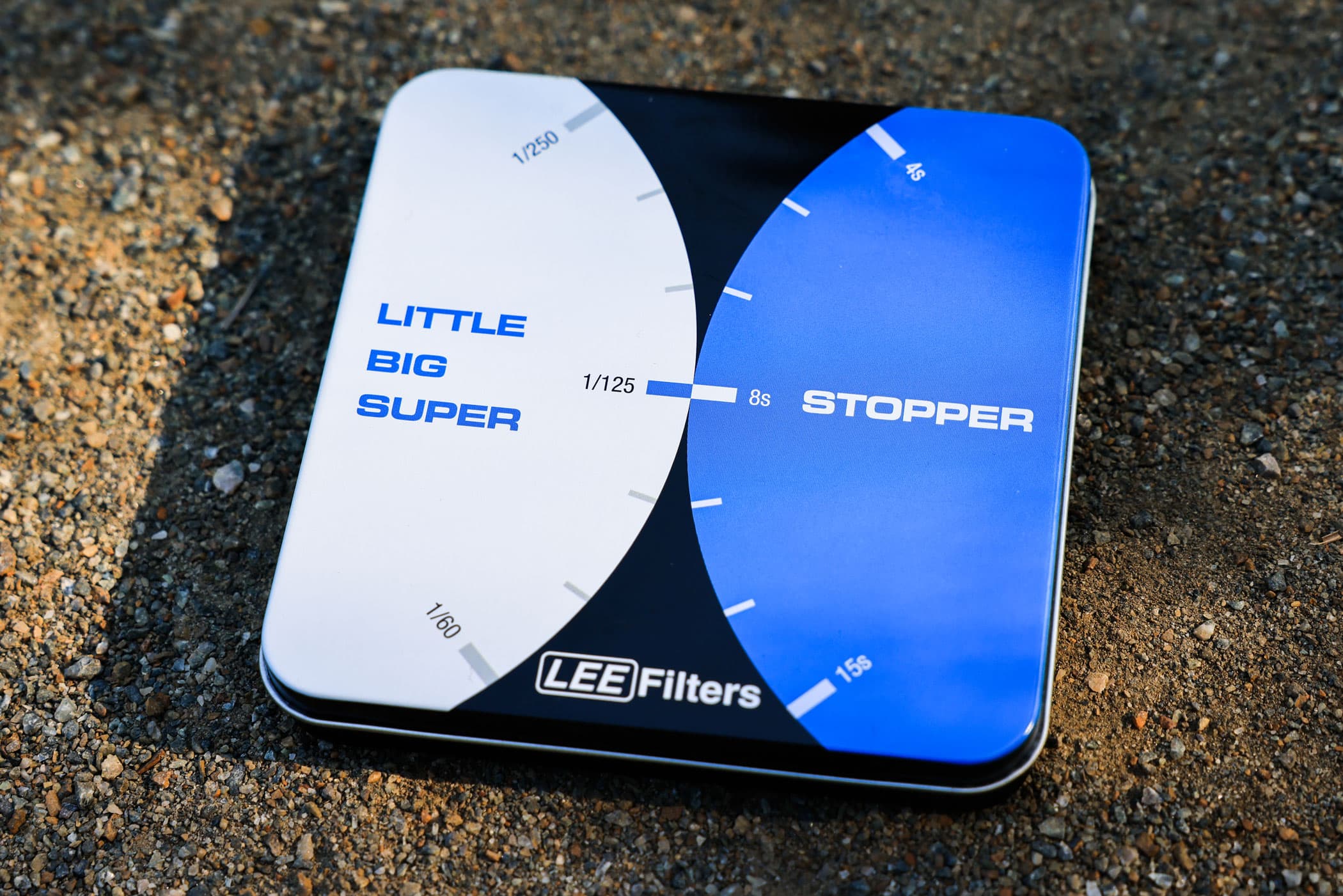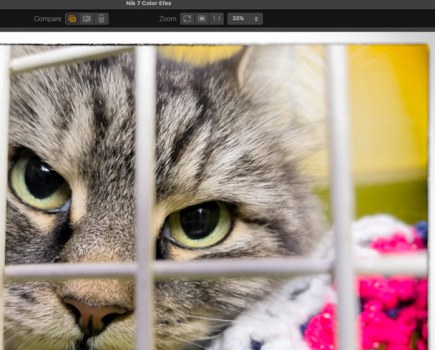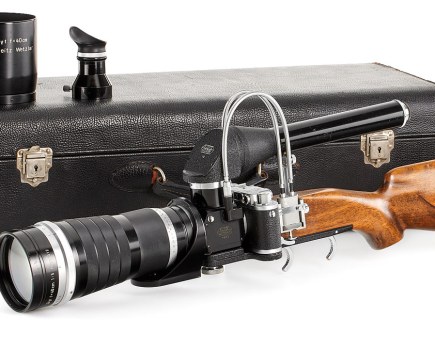If you’re new to the world of filters, or you’re looking to buy into a filter system for a new camera, it can be difficult to know what to purchase and where your money is best spent. In the case of LEE Filters, the company has come up with a way of making it easier for customers to understand exactly which of their three filter systems are compatible with the lenses they own by creating an intuitive guide on their website that’s aptly named ‘System Match’. As well as recommending which filter system is best from over 700 indexed lenses, it informs what adapter rings you’ll need to attach the relevant filter holder to your lenses. It’s an excellent aid for anyone who might be hesitant or unsure about which filter system to buy.
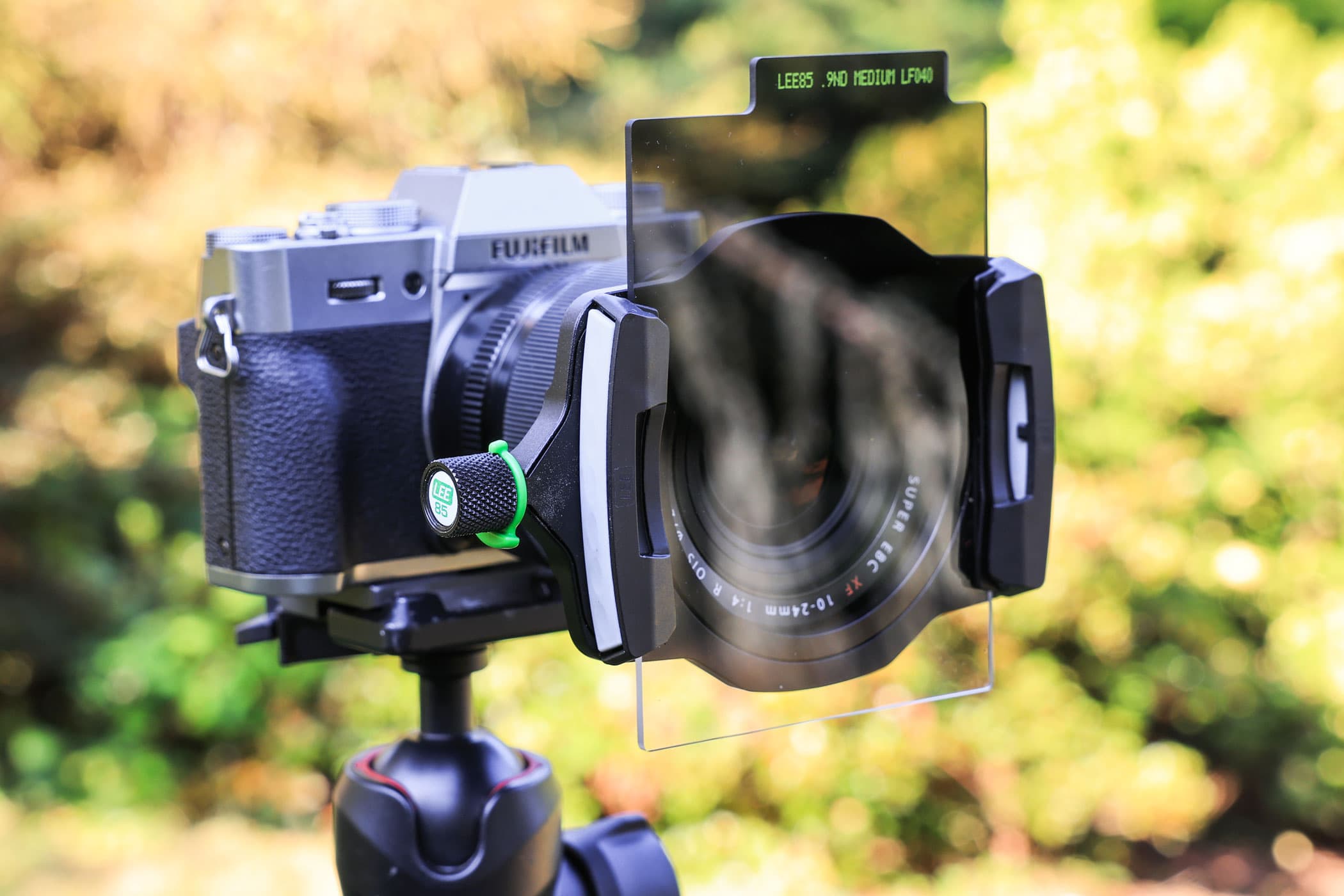
Filters are handled via a small tab at the top to prevent fingerprints being applied to the main surface
If you’re a photographer who uses a crop-sensor camera and small sized lenses with filter thread diameters ranging from 37mm to 72mm, the ‘System Match’ guide will point you in the direction of the new LEE85 filter system. Smaller, lighter and more compact than the LEE100 and SW150 Mark II filter systems, it’s purposely designed for photographers with smaller-bodied cameras and lenses who’d like to travel light, but don’t want to compromise on filter quality or versatility. The LEE85 filter system replaces the Seven5 micro filter system that has been around for several years and is based around a new filter holder that works with a wide range of filters, including a clip-on polariser, neutral density filters, as well as long-exposure filters.
What has changed?
There are various differences between the new LEE85 filter holder and the company’s Seven5 filter holder of old. It’s very similar to the LEE100 holder in terms of design, but instead of being precision engineered from injection-moulded composite materials, the LEE85 holder is made from aluminium like the discontinued Seven5 holder. At the side of the holder the spring release that’s used to secure and remove the holder from an adapter ring fitted to the lens operates identically to the LEE100 holder.
Making the spring release larger not only makes it easier to locate from behind the camera, it’s not as tricky to operate in the cold when you’re wearing gloves and can be attached and removed with one hand when your other hand is occupied. The clever part about the spring release is the lime green locking ring, which features three settings – neutral, half lock and full lock. When it’s set to its neutral position, the holder can be rotated freely and quickly removed from the adapter ring.
Change the locking ring to its half lock setting and you’ll find the holder can still be rotated, albeit with slightly more friction, but can’t be removed from the adapter ring. In its full lock setting the holder is locked to the adapter ring and cannot be rotated. This is much more control than was previously offered by the Seven5 filter holder, which secured in a similar fashion but was more susceptible to being inadvertently knocked without a locking mechanism. The size of the LEE85 holder is larger than that of the Seven5 holder and accepts larger diameter adapter rings. Anyone who owns Seven5 adapter rings will find they’re incompatible with the LEE85 system.
There’s more besides the spring release that makes the LEE85 filter system easier to use. The new modular filter-guide blocks are so much easier to use and set up than the old kind that required you to source a small screwdriver, unscrew four metal screws, add or remove the relevant guide blocks and then secure with the screws again. The holder is fitted with guide blocks to slot in two filters out of the box, but these can be swapped for one-slot or three-slot guide blocks in a matter of seconds depending on how many filters you intend to use. The great thing about the design is that you no longer need worry about dropping or losing screws when swapping guide blocks out in the field.
You’re also supplied with grey rubber inserts that locate at the side to prevent light from penetrating past the side of the guide block as well as a drawstring bag to keep all the spare parts together. Another good thing about the revised guide block design is that it accepts the attachment of a new LEE85 polariser, which is quick to clip on at the front and does so in the same way the LEE100 polariser attaches to the LEE100 filter holder.
There’s a reassuring click when the polariser is installed and it’s safest to remove the polariser (done by squeezing the plastic catches together) when the filter holder is removed from the lens than when it’s attached. To keep the polariser in immaculate condition and free from damage when not in use, users will want to store it in the clamshell case it’s provided with. The LEE85 polariser costs £199 on its own and is included in the LEE85 Deluxe filter kit (£499).
What is it like to use?
The LEE85 system is easy to use, which is exactly what you want when working in demanding outdoor environments where we often need to react quickly to changing light and variable conditions.
Clipping the polariser on and off at the front of the holder ahead of any other mounted filters saves time having to remove the filter holder from the adapter ring to access the polariser like you do with many geared systems. Filters slide into the guide blocks smoothly and are firmly held in place; the Big Stopper filter has a permanently attached gasket to create an effective light-tight seal when shooting long exposures and the LEE85 graduated and standard ND filters benefit from new labelled grip tabs. The idea of these is that they make them easier to identify in a filter pouch and help to keep fingerprints off the surface of the filter.

To retain detail in the sky, a 0.6 Medium ND grad was used with the LEE 85 filter holder. Beachy Head, East Sussex Fujifilm X-T30, XF 10-24mm F4 R OIS, 1/40sec at f/5.6, ISO 200
I tested the system with the Fujifilm X-T30 and a couple of lenses with 58mm and 72mm filter threads. With the wideangle Fujifilm XF 10-24mm f4 R OIS, I managed to shoot as wide as 10mm (equivalent to 15mm in 35mm terms) using three filters without vignetting. Adding the LEE85 polariser to this combination did introduce dark corners, forcing me to zoom in slightly to remove them. With the single filter guide blocks and polariser attached, I was able to shoot as wide as 10mm without any vignetting.
The LEE85 system is good for small-bodied cameras and petite lenses, however if you own a few lenses that have a filter thread larger than 72mm you won’t be able to use it with them as the thread size of the lens will exceed the largest adapter ring available. Let’s say, for example, you own a couple of lenses with a 77mm thread size and a few with smaller 58mm and 62mm thread sizes. Though the 58mm and 62mm thread sized lenses could be used with the LEE85 system, the two 77mm lenses couldn’t. In this instance the LEE100 system would make the better choice as it has adapter ring sizes ranging from 49mm to 105mm, allowing you to attach filters to all the lenses you own rather than just a couple.
Pricing & Kits
LEE Filters will be selling its LEE85 system in four different kits. First of these is the LEE85 Discover Kit (£199) that comprises a LEE85 filter holder, LEE 0.6ND medium grad, three adapter rings (58mm, 67mm and 72mm) and a filter pouch. The LEE85 Develop kit (£265) offers everything you get in the Discover kit, plus a 10-stop Big Stopper filter protected in its own storage tin.
The LEE85 Aspire kit (£349) adds a 0.9 medium grad, filter wash and cleaning cloth to everything you get in the Develop kit, while the LEE85 Deluxe kit (£499) includes all of the above with the addition of the LEE85 Polariser. All LEE85 kits are supplied with three adapter rings in the box (58mm, 67mm and 72mm); other adapter rings, with thread sizes ranging from 37mm up to 72mm, are available separately for £20-£25 each.
Choosing the right system
The LEE85 system is good for small-bodied cameras and petite lenses, however if you own a few lenses that have a filter thread larger than 72mm you won’t be able to use it with them as the thread size of the lens will exceed the largest adapter ring available. Let’s say, for example, you own a couple of lenses with a 77mm thread size and a few with smaller 58mm and 62mm thread sizes. Though the 58mm and 62mm thread sized lenses could be used with the LEE85 system, the two 77mm lenses couldn’t. In this instance the LEE100 system would make the better choice as it has adapter ring sizes ranging from 49mm to 105mm, allowing you to attach filters to all the lenses you own rather than just a couple. You can read our review of the LEE100 system here.
Verdict
The LEE85 system is essentially an updated version of the Seven5 micro filter system that shares many similarities with the LEE100 system. With it you get a better thought through filter holder, which provides superior locking control, lets you alter filter slot configurations easily and provides the option to clip on a polariser at the front.
As we said when we reviewed the LEE100 system, the only downside is that filters aren’t as quick to attach as some alternative systems that use clip-on magnetic frames that also help protect filters from getting chipped and damaged. In summary, if you’re prepared to throw some money at a practical, lightweight filter system to compliment your small camera system, the LEE85 system makes a fine choice.


